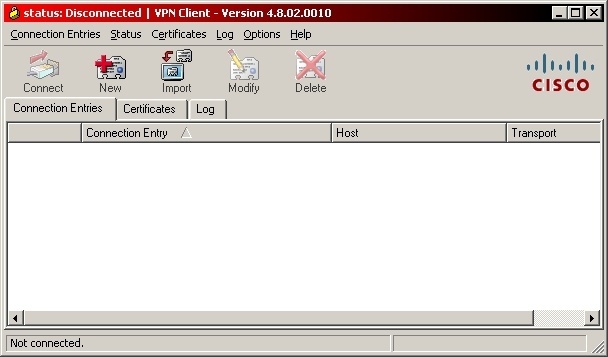

- CONFIGURING CISCO VPN CLIENT INSTALL
- CONFIGURING CISCO VPN CLIENT ARCHIVE
- CONFIGURING CISCO VPN CLIENT WINDOWS
Hostname(config-webvpn)# svc image windows2.pkg 1
CONFIGURING CISCO VPN CLIENT ARCHIVE
Then the SVC archive images are re-ordered using the svc image command, with the windows2.pkg image as the first image downloaded to the remote PC, and the windows.pkg image downloaded second: hostname(config-webvpn)# no svc image If the image does not match the operating system, the windows2.pkg image downloads: hostname(config)# webvpn When a remote computer attempts to establish an SVC connection, the windows.pkg image downloads first. In the following example, the output of the show webvpn svc command indicates that the windows.pkg image has an order number of 1, and the windows2.pkg image has an order number of 2. Therefore, you should assign the lowest number to the image used by the most commonly-encountered operating system. It downloads the SVC image with the lowest number first. Numbering of the SVC images establishes the order in which the security appliance downloads them to the remote computer. Step 2 Assign an order to the SVC images using the svc image command from webvpn mode: In this example, the images are copied from a tftp server using the copy tftp comand: hostname# copy tftp flashĪddress or name of remote host ? 209.165.200.226 Step 1 Copy the SVC images to the security appliance using the copy command from privileged EXEC mode, or using another method.
CONFIGURING CISCO VPN CLIENT INSTALL
Perform the following steps to install SVC: Installing SVC consists of copying the SVC images to the security appliance and assigning an order to the images.
CONFIGURING CISCO VPN CLIENT WINDOWS
The SVC requires Windows 2000 or Windows XP on the remote computer. This section presents the platform requirements and the procedure for installing SVC.



 0 kommentar(er)
0 kommentar(er)
